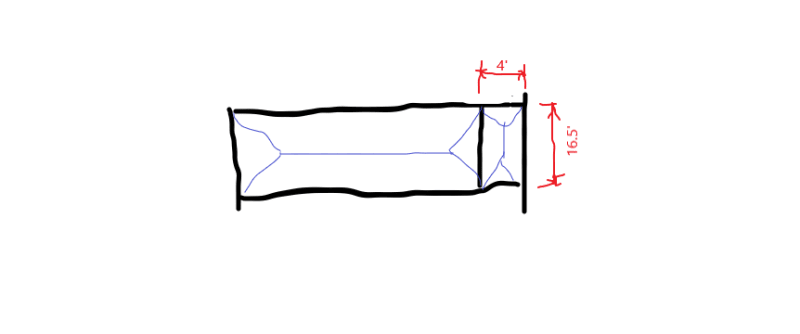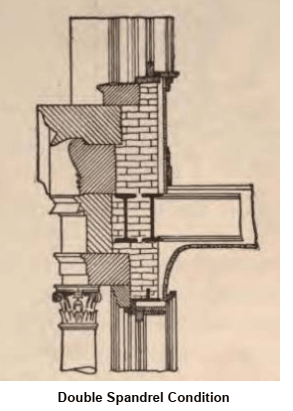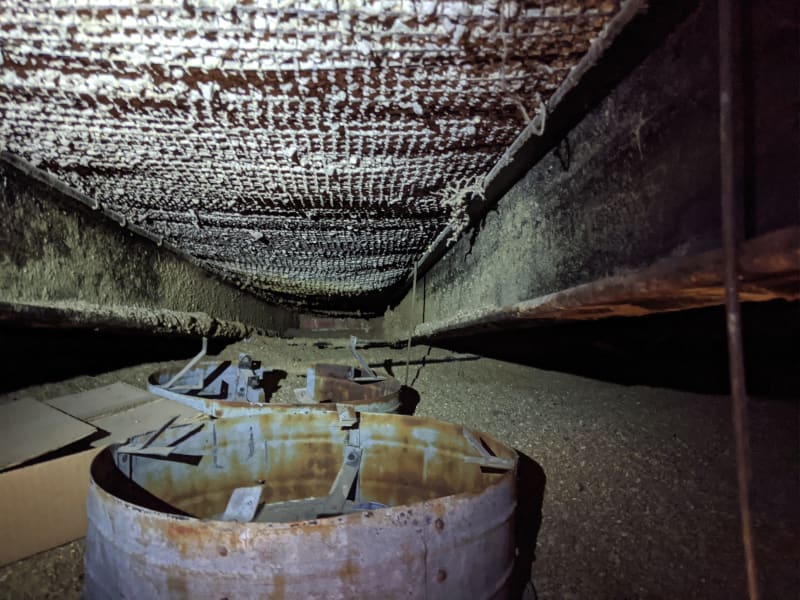I'm running into an issue on an analysis that I am doing for a 100 year old 4 story building....and I'm wondering what I could be missing that's causing it to blow up on me.
General description of the building:
- 24' x 90' rough dimensions for first two levels. Then upper levels step in on one side and building is 20' x 90'
- Steel Lumber Floor system (basically cold-formed steel back to back channels) with 6" concrete slabs on each floor
- Upper floors span the narrow direction across the building and bear on exterior masonry walls
- Exterior walls are 12" - 16" brick
- Where the building steps in, the exterior wall (and thus half of the floor load from upper floors) is supported by a pair of steel I-Beams which, in turn, frame into 4 18" deep floor girders which also span across the narrow width of the building.
- No obvious signs of structural problems...bowed floors, cracked plaster, etc.
Issue:
I've taken into account the soft steel of the 1920's. I've found good design data on the steel lumber product and deduced it was designed for the typical residential 40 psf live loads plus the weight of the concrete floor. And I've done select demolition in different parts of the building enough that I have a pretty reasonable feel for how the building was framed and how it all works.
The problem is that when I run the analysis of the steel beams which are supporting the stepped in wall, it is blowing up on me. Stress ratios 2-3 times what the allowable was for 1920 steel (16,000 psi according to old literature). So much so, that even just running a dead load case it is still 1-2 times allowable.
I refuse to believe that the building has been standing 100 years and could be this far off. Even if you include the possibility that they ignored live load, it still seems unreasonable to assume they didn't account for the building materials they used! So I believe the issue is on my end.
I also am not eager to be the engineer who cries wolf that the building is unstable when it has stood for 100 years without any visible signs of structural distress.
Anyone with experience in similarly aged structures able to lend some expertise?
General description of the building:
- 24' x 90' rough dimensions for first two levels. Then upper levels step in on one side and building is 20' x 90'
- Steel Lumber Floor system (basically cold-formed steel back to back channels) with 6" concrete slabs on each floor
- Upper floors span the narrow direction across the building and bear on exterior masonry walls
- Exterior walls are 12" - 16" brick
- Where the building steps in, the exterior wall (and thus half of the floor load from upper floors) is supported by a pair of steel I-Beams which, in turn, frame into 4 18" deep floor girders which also span across the narrow width of the building.
- No obvious signs of structural problems...bowed floors, cracked plaster, etc.
Issue:
I've taken into account the soft steel of the 1920's. I've found good design data on the steel lumber product and deduced it was designed for the typical residential 40 psf live loads plus the weight of the concrete floor. And I've done select demolition in different parts of the building enough that I have a pretty reasonable feel for how the building was framed and how it all works.
The problem is that when I run the analysis of the steel beams which are supporting the stepped in wall, it is blowing up on me. Stress ratios 2-3 times what the allowable was for 1920 steel (16,000 psi according to old literature). So much so, that even just running a dead load case it is still 1-2 times allowable.
I refuse to believe that the building has been standing 100 years and could be this far off. Even if you include the possibility that they ignored live load, it still seems unreasonable to assume they didn't account for the building materials they used! So I believe the issue is on my end.
I also am not eager to be the engineer who cries wolf that the building is unstable when it has stood for 100 years without any visible signs of structural distress.
Anyone with experience in similarly aged structures able to lend some expertise?



